Different Types Of Stretch Fabrics
Jump To:
Stretch fabric refers to such a fabric that can quickly expand and contract its fibers without much effort. This means that one can easily stretch the fibers of this fabric up to a certain extent and then return those fibers to their natural size again. One can make tons of stuff using this fabric since it is straightforward to handle and work with. From the types of fabrics, the use of stretch fabric in clothing allows stretch for effortless movements. In this article, learn about the various types of stretch fabrics from spandex fabric and different spandex fabric blends, cotton poplin fabric, powernet fabric and more.
Classification Of Stretch Fabrics
There are two types of stretch fabrics, namely, 2-way stretch fabric and 4-way stretch fabric. The 2-way stretch fabric stretches only in a single direction and then bounces back and returns to its previous size. Since this fabric stretches only in one way, it can either stretch crosswise or lengthwise.
Both ways are not possible. On the other hand, the four-way stretch fabric stretches only in two directions. One may feel that this fabric is stretchable in all directions, but that is just an illusion. This fabric stretches in both crosswise direction and lengthwise directions.
1. Spandex
Among all the different stretch fabrics, spandex fabric is the most familiar. The textile industry was almost in shock after discovering its stretching abilities. A spandex fabric can stretch up to five to eight times its average size. The elastane content in the fabric also affects its stretching abilities.
The elastane content in most of the spandex fabric comfort wear is between 1% to 5%. Whereas, in the spandex fabric athletes wear, the elastane content rises and is between 12% to 15%.
The base material for the construction of spandex is cotton or nylon, wool, and elastic. People often have confusion regarding spandex fabric and lycra fabric since they consider both to be the same. But lycra is just a type of spandex material.
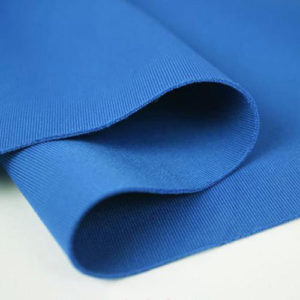
One can blend the material of spandex along with other fabric fibers to enhance their elasticity level. The level of elasticity ranges between 2% to 20%. There are various types of spandex blends, and some of them are given below:
Nylon spandex blend
The nylon-spandex blend mostly has around 15% of spandex. But there are some exceptions. When one blends tricot or other similar fabrics along with it, then the containment of spandex is between 25% to 50%. People use this blend to construct activewear, such as swimsuits, cycling clothing, sports bra, etc.
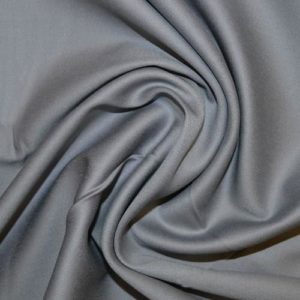
Polyester spandex blend
Polyester is an inexpensive material that man people use for making various clothing items. One can also blend it with spandex and make different garments. The fabric is very lightweight, and hence people use it for sewing costumes, leggings, and even dancewear.
The material polyester spandex is also something that people love to work with. That is because sewing with polyester spandex gives clothing items a leathery look.
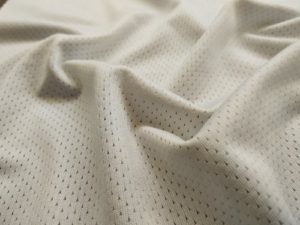
Rayon knit spandex
The Rayon spandex makes high-quality form-fitting materials. They are incredibly soft and smooth. People who wear clothes of this material feel like they are wearing silk. It is incredibly comfortable as well. The Rayon knit spandex has a type, namely, bamboo rayon, which feels exceptionally smooth against the wearer’s skin.
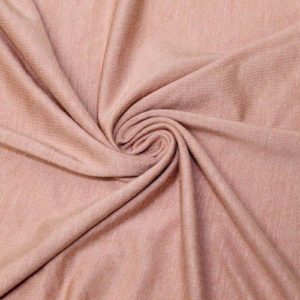
Cotton spandex blend
The cotton-spandex blend is a highly smooth material and is well-known for its smoothness as well. It is a versatile piece of material and can stretch in all 4-ways. This material consists of 3% to 5% of spandex. Tees, skirts, dresses, and other similar clothing items use this material for their structure.
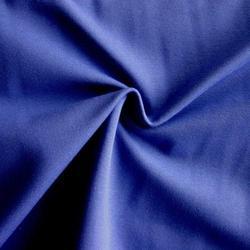
2. Stretchy lace
Laces are excellent material, and people use them in different kinds of clothing. But if it is stretchy as well, then one can do a lot more things using it. The weaving of this fabric is done using synthetic threads and elastic.
It twists the elastic thread and creates patterns with it by using a method known as the bobbin weaving method. Stretchy lace is very common in underwear, but one can also use it for dresses, evening wears, fitting blouses, skirts, lingerie, and leggings.
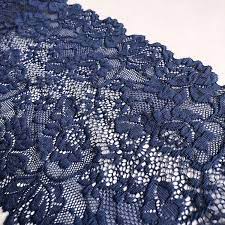
3. Stretchy denim
The combination of cotton, spandex, and polyester gives rise to this particular material. It is pretty stretchy and is very comfortable as well. Jeans, skirts, and dresses use the material of stretch denim for their construction. They make fitted jeans and do not irritate.
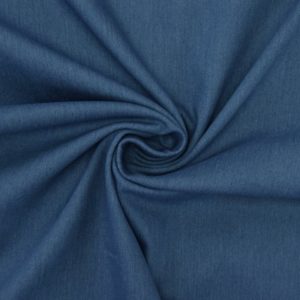
4. PowerNet
This fabric is something that not many people are aware of. It consists of a generous amount of elastane fibers and has a good netting consistency. It contains 25% to 50% spandex and 50% to 75% nylon.
The use of Powernet fabric is common for making underwear. This fabric has a 4-way stretch and provides an outstanding amount of support and strength to garments.
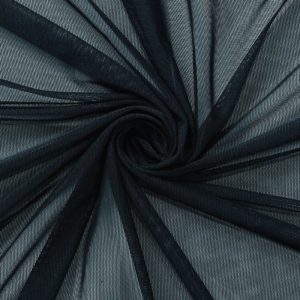
5. Cotton poplin stretch
The cotton poplin stretch is a material that uses spandex, cotton, and poplin for its construction. It is very comfortable but is not very stretchy. This material provides only a 10% stretch in clothing. But still, many shirts use this material for their structure.
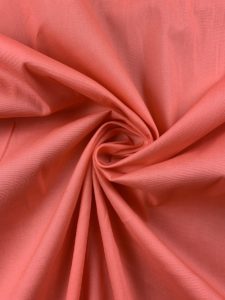
6. Knit fabric
Knit fabrics are not too stretchy, and hence one uses them for sewing purposes. They have a 2-way stretch, and there are different knit fabrics available as well. Each one has its unique features, and one can use them for various sewing methods.
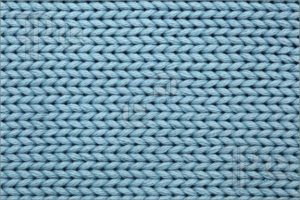
7. Rubber
One can use rubber for making a minimal selection of garments. They are not very comfortable, and people face difficulties while putting them on. But rubber is a very stretchy material and is also water-resistant.
Working with rubber is very hard, and some people are even allergic to it. There are very few clothing items made of rubber since they cause irritation to the skin and are not appropriate for dry cleaning.
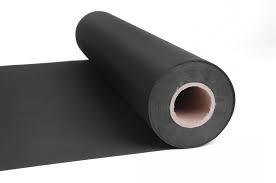
Neoprene rubber
The neoprene rubber is not pure rubber. It is a synthetic polymer that bears a close resemblance with the material of rubber. Many items use neoprene rubber for their construction. The use of this fiber is most commonly seen in the construction of scuba diver’s suits.
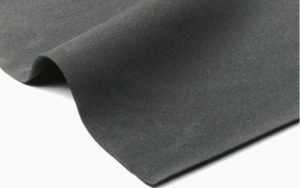
The clothing industry is trying to incorporate the use of this fabric in various more clothing items. Available in various thicknesses, this material has a rubbery and smooth outer surface, while the inner part is thick and padded. Neoprene rubber is a thick, flexible, and stretchy material.
There are more stretch fabrics available, and the stretching limit is different for each of them. They are comfortable, and various types of clothing items use them for their construction. Knowing about all the different types not only increases your knowledge but also allows you to choose the suitable material easily.
Which fabric is most stretchable?
Spandex (also known as Lycra or elastane) wins the most stretchy fabric award without question. This material contains pure elastomers. You can think of these as tiny bits of elastic! You can measure the stretch percentage of any kind of elastic material in this way.
Is 100% cotton stretchy?
All-cotton jeans are not “stretchy.” When you put them on for the first time, they are likely to feel tight and rather unforgiving.
What fabrics are 4 way stretch?
Fabrics Have 4-Way Stretch Knits – there are jersey knits, woolen jersey fabric, 3 by 3 rib knit, bamboo jersey, double knit and more. Spandex – cotton spandex, polyester spandex, nylon spandex, rayon spandex, stretch satin, stretch velvet, stretch denim and more.
What kind of fabric is soft and stretchy?
Jersey is a soft stretchy, knit fabric that was originally made from wool. Today, jersey is also made from cotton, cotton blends, and synthetic fibers.
Is nylon and spandex stretchy?
In terms of rigidity, nylon is better while spandex gives fabrics a smoother and softer quality. When combined, a nylon-spandex fabric will give you a lot more stretch than nylon alone can. However, the fibers should be knitted together and not woven.
Is cotton and spandex stretchy?
Fabrics such as spandex and nylon tend to have elastic stretch. On the other hand, cotton doesn’t have elastic stretch. Instead, it stretches a little to better fit your body with more wear.
Is acrylic stretchy?
Acrylic is a fiber often found in women’s sweaters, knit suits, pants, skirts, and dresses. It is characterized by its ability to stretch and conform to the shape of the body and recover to its original dimensions once the tension is released.
Is cotton and polyester stretchy?
Interestingly, cotton and polyester stretch in exactly the same way. Neither type of fiber is elastomeric, meaning that they do not stretch. Whether or not the fabrics stretch depends on their construction. Woven cotton does not stretch.
Is polyester stretchy?
In short, polyester fibers are not stretchy and it is very difficult to get much movement out of them.
What are stretch woven fabrics?
Stretch woven fabrics are woven fabrics with the addition of spandex fibre. Compared to knitted fabrics, stretch wovens tend to be used in more structured garments with the stretch often adding to the comfort of the garment.
Is nylon a stretch fabric?
Nylon has both excellent strength and abrasion resistance, allowing it to stand up to any sport. It has a fantastic elastic recovery meaning that fabrics can stretch to their limits without losing their shape. Besides, nylon has good resistance to sunlight, making it an excellent choice for activewear.
Is Cotton Jersey stretchy?
Jersey is a single-knit cotton fabric that’s known for its stretch and softness. Sheets made from jersey are stretchy, soft, and release wrinkles more easily than percale, another cotton fabric typically used to make sheets.
Is viscose blend stretchable?
Is Cotton Viscose Stretchy? Cotton and viscose blended together are not very stretchy. Both of these fabrics are relatively non-stretchy which does not increase the stretchiness by much. Cotton is more stretchy than viscous.
Does polyester and elastane stretch?
The polyester won’t stretch but the elastane will. This added stretch allows clothing manufacturers to make slimmer, skinny clothes that tightly conform to the body. With the added stretch blended with polyester, you should feel warmer as well as move any way you want.
